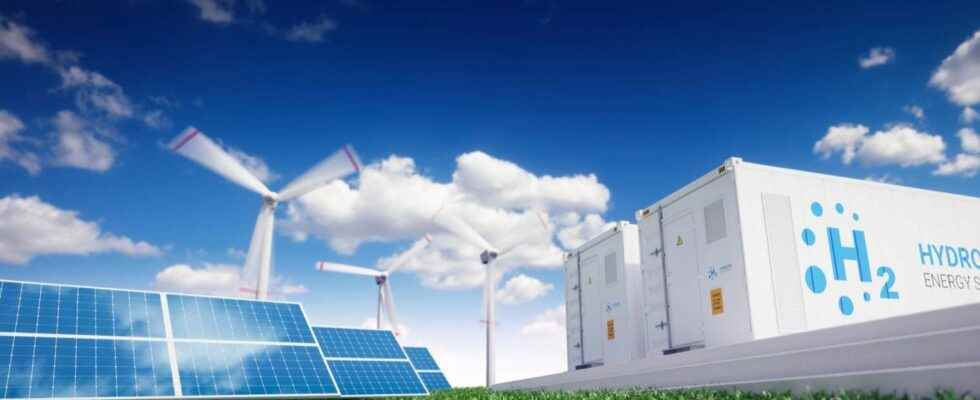Air Liquide has just received support from the French State, subject to final validation by the European Commission, to launch its Air Liquide Normand’Hy project for large-scale renewable hydrogen production. Stéphane Vialet, director of energy transition projects for the South West Europe Cluster, agreed to talk to Futura about it during the show VivaTech 2022.
You will also be interested
[EN VIDÉO] Blue, grey, yellow and green hydrogen: what’s the difference? Hydrogen is often equated with a color, which depends on how it is produced.
With the support of France, the Air project Liquid Normand’Hy will be able to be launched. Futura met and interviewed Stéphane Vialet, project director of energetic transition for the South West Europe Cluster at Air Liquid.
Futura: Could you tell us about this electrolyser project, called Air Liquide Normand’Hy?
Stephane Vialet : Normand’Hy is a production project ofhydrogen large-scale renewable with a capacity of 200 MW. It will make it possible to produce 20,000 tons per year and avoid emissions 200,000 tonnes of CO2 per year. Renewable hydrogen will be produced using the technology ofelectrolysis membrane by proton exchange Siemens Energy, which will userenewable energythat’s to say solar and wind, produced in France. The installation, connected to the electrical network, will produce at the same time the renewable hydrogen where the renewable energy is produced and injected into the grid. This hydrogen will notably supply the two major refineries in the Normandy region, Esso in Gravenchon-Port Jérôme sur Seine and TotalEnergies in Gonfreville.
Futura: How does this project contribute to your energy transition ambitions?
Stephane Vialet : This project will represent a fifth of our hydrogen production in the Normandy region, currently at around 100,000 tonnes. We will gradually replace the existing production from methaneso original fossil and which emits CO2, by renewable hydrogen which does not emit any. This project is a great first for Air Liquide since the previous electrolysis projects only had a capacity of 20 MW and we are now going to 200 MW. It should also be remembered that Air Liquide’s objective is to invest the equivalent of 3 GW in electrolysis by 2030. The Air Liquide Normand’Hy project therefore represents a first step towards the large-scale deployment of this type of technologies.
Futura: It also participates in the famous “net zero” that everyone must achieve?
Stephane Vialet : The environment is very important for a group like Air Liquide, rooted in a society that has made commitments to achieve the carbon neutrality in 2050 and therefore begin to significantly reduce its CO emissions2 from 2025. As our activity consists mainly of transforming energy, which therefore emits CO2, we need to invent zero-carbon growth. It takes a bit of time but, from 2025, when projects like Air Liquide Normand’Hy are going to start, we will be able to begin the decline with a quantified objective of minus 30% of the group’s emissions from 2035, i.e. 24 million tonnes of CO2 per year instead of the current 36 million tons.
Futura: Does this acceleration go through innovation, which occupies an important place in your Group?
Stephane Vialet : The path to innovation in a large group like Air Liquide goes through R&Dinternally, but also with a ecosystem start-ups and universities. Once the innovation is ready to be industrialized, it is transferred to the Engineering department and Construction who uses these innovations in new projects. For the Air Liquide Normand’Hy project, we are using technology from an industrial partner with whom we have partnered, namely Siemens Energy, which is mature at TRL level 8 or 9 and therefore we can already deploy on an industrial scale.
Interested in what you just read?
